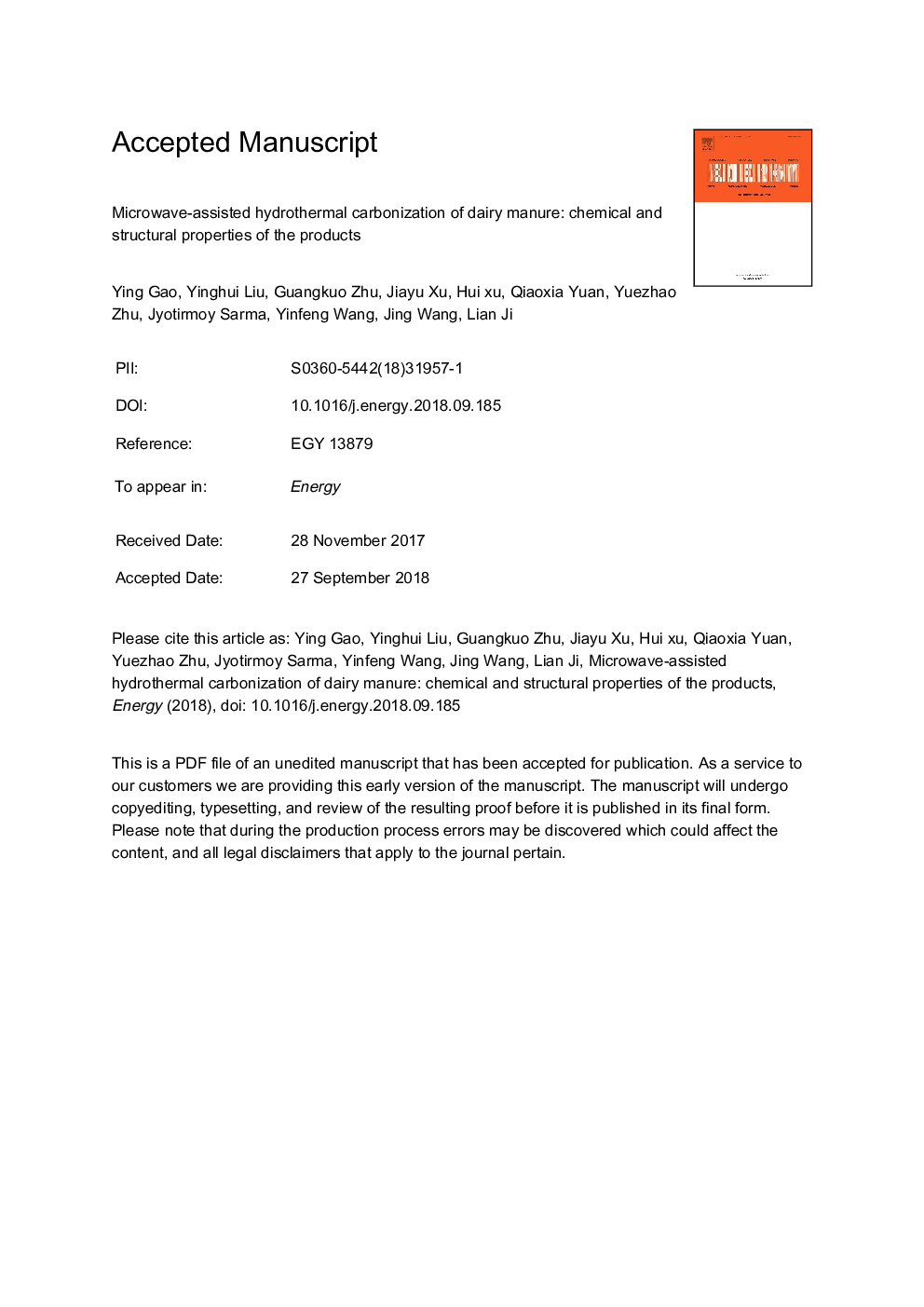| Article ID | Journal | Published Year | Pages | File Type |
|---|---|---|---|---|
| 11015680 | Energy | 2018 | 38 Pages |
Abstract
In this study, microwaves were introduced into the hydrothermal carbonization (HTC) of high-moisture biomass dairy manure (DM). Experiments were conducted to investigate the effect of reaction temperature and residence time on the distribution and characteristics of products. A maximum hydrochar yield of 67.94â¯wt. % was achieved. Microwave heating was advantageous to the HTC treatment of DM and had significant impacts on the physicochemical structure and characteristics of the products. The saccharides, aldehydes and carbon microspheres in the aqueous-phase products influenced the production of the hydrochar. Treating DM through microwave-assisted HTC provided better chemical and structural properties. A longer residence time had a visual effect on the surface morphology. At a residence time of 10â¯h, the hydrochar exhibited a lamellar structure like graphene, and the morphology of hydrochar changed to microspheres of higher yield at14â¯h.
Related Topics
Physical Sciences and Engineering
Energy
Energy (General)
Authors
Ying Gao, Yinghui Liu, Guangkuo Zhu, Jiayu Xu, Hui xu, Qiaoxia Yuan, Yuezhao Zhu, Jyotirmoy Sarma, Yinfeng Wang, Jing Wang, Lian Ji,
